Cistus - the best varieties and agricultural technology
Cistus - evergreen low shrubs, sometimes dwarf shrubs. They have erect pubescent stems or strongly branch. The leaves are also pubescent, sometimes sticky, they are covered with glandular hairs that secrete an aromatic resin, familiar to everyone like incense.
Many large, similar to rose hip flowers, they are single or collected in half-umbrellas, there are from 3 to 10 pieces. It blooms exclusively in sunny weather, petals from a flower fall 8 hours after formation, 4-5 rounded petals, back-heart-shaped or wedge-shaped, usually corrugated, silky, bright, mostly white, but also from pink to purple, have a basal yellow or red spot or no spots. The flower has many yellow stamens. The plant blooms all summer.
Content:
Cistus varieties
Popular varieties:
- Cistus is beautiful - a very low bush, up to 30-60 cm high and about the same width. It is a dwarf hybrid with white flowers that have red spots inside. Flowers up to 5 cm in diameter. This hybrid is planted to decorate a patio or terrace in summer.
- Crimean cistus is a small shrub up to 0.5-1 m high, with pubescent shoots. The leaves are rounded or elliptical, wrinkled, 2-5 cm long and 1-3 cm wide. The flowers are mauve. Fruits in the form of a polyspermous capsule. Seeds are rough, angular, red-brown in color. The plant is resistant to drought and frost.
- Cistus is a bush up to 1-1.5 m high. It has a stem that is brown below and brown-green above. Its leaves are shiny, long and pointed, The flowers are white, with 5 petals, with many stamens.
- Cistus laurel - the bush grows up to 80-90 cm in height, has a diameter of 75-80 cm. It has oval, somewhat pointed leaves, they shine weakly, they have a waxy gray bloom. The flowers are white, have 5 petals, and their diameter is 7.5-8 cm.
- Montpellien cistus is a bush that does not have a central shoot. It grows up to 60-70 cm. The stem is reddish above and light brown below. Its leaves are long and narrow.
Reproduction methods
Common varieties propagate seeds and seedlings, and hybrid seedlings exclusively. Seeds are planted in March or are planted in a room in containers.
If you want to propagate a plant cuttingsthen:
- Cut the cuttings with 10 cm heels in August. The heel is part of the parent stem.
- Tear off all the lower leaves and place the cuttings 5 cm deep in the soil made from the same parts of peat and sand, 3 pieces of cuttings in a container with a diameter of 8 cm.
- Then place the container in a greenhouse, in which the air temperature is + 16 ° C, if there is no greenhouse, then put it in a warm, shaded and protected from the wind place.
- Place a plastic bag over the pot or container to keep it warm and windproof.
In calm and sunny weather, the greenhouses are ventilated, if necessary, the cistus is watered, but not very abundantly. In spring and summer, plants need to be trimmed, weeded and feed.
In the fall, it is necessary to dig out the seedlings and transplant them to a permanent place.
They need to be sorted, that is, standard ones (with an aerial part of about 12-15 cm, root collar thickness 0.8-1, roots 12-15 cm) are planted in a permanent place, and non-standard ones are grown.
Landing
It is necessary to plant the plant in open sunny areas that are protected from the wind. It doesn't like shadow. Grows well in Mediterranean climates with mild winters and dry, hot summers. The soil should be neutral or alkaline. You can plant on sandy or calcareous light soils, but drainage must be done. Drought-resistant. Does not tolerate waterlogging.
Cistus grows for about 25 years, so good open areas are taken for planting, they are carefully prepared. It grows well on light gravelly soil.
Outdoors, the plant can only grow in subtropical climates.
For planting in the ground, remove weeds, the soil is dug up to 60-70 cm.
Then add mineral and organic fertilizers and plowed again to a depth of 30-40 cm. The bushes are planted in open ground in October-November. The field is marked and dug holes of 30x30 cm with a feeding area of 2.5x1 m.
If you are planting a plant in a container or pot, add shards to the bottom for drainage. Then fill with soil, which consists of sand, compost, lime. Choose an open and sunny location for the container. It is recommended not to place the container where there are strong winds. The plant tolerates heat well. If the pot is in the air, then wrap it with polyethylene in the fall, remove the wrapping when spring comes.
Grooming and pruning
Potted compost should be watered to keep it moist but not wet. From spring to the end of summer, the plant is fed every 14 days with a weak diluted liquid fertilizer.
If you grow a cistus on a windowsill, then you need:
- For the air temperature to be + 12-15 ° C, the plant must be well lit.
- It is recommended to take it outdoors in summer.
- Since spring, the cistus is fed once every 10-15 days. It is best to choose water-soluble or granular fertilizers. Less fertilization is applied in summer. By the middle of autumn, organic fertilizers.
- When the plant is a little older, transplant it into another larger pot. Transplant until you use a pot with a diameter of 45 cm.
You need to constantly pick off wilted flowers, after the end flowering cut off all strongly elongated branches, as well as those branches that do not have leaves underneath. Young shrubs are pinched so that they grow dense and compact. The plant loves warmth, is not frost-resistant, only some varieties do not die at temperatures down to minus 15-18 ° C. In the middle lane, it is grown only in containers.
Cropping:
- If the plant is in the air, then, as soon as the frost stops, cut off the branches that are damaged by frost, as they can turn black and shrivel.
- Plants are pruned to improve its shape, to stimulate the formation of new leaves.
- Trim branches need 3-4 cm above the node. In this case, new shoots will soon give the plant shape.
- Pruning should not be done when the plant is in bloom. Usually, cistus shrubs are cut by spring.
- Several branches are cut from the center of the plant, and branches from the edges are cut by 1/3 or 2/3. Cut off any shoots that stick out randomly.
- But when the cistus grows up, it tolerates pruning much worse, and may also stop developing.
Diseases and pests
If the rock rose produces very few flowers, and the leaves are wilted and painful, this is due to too dry soil, shady area or insufficient feeding.
Cistus can damage snails and slugs.
They eat plants and leave behind traces of mucus. Place at the base of a container or pot, and on the bottom of the bait. When you buy a plant, make sure that there are many leaves on all parts of the bush, and the shoots below are not bare.Do not buy shrubs that are sold in small pots as they may not survive.
More information can be found in the video.



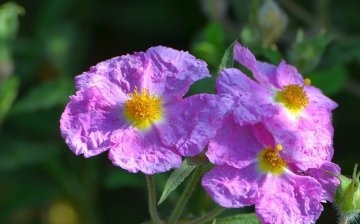
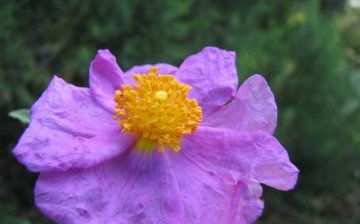
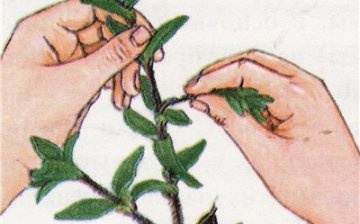

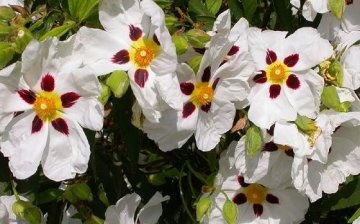
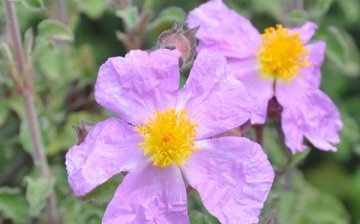







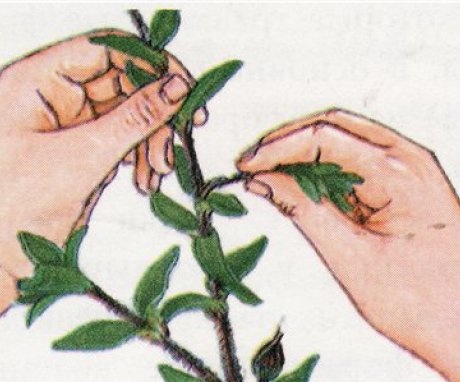

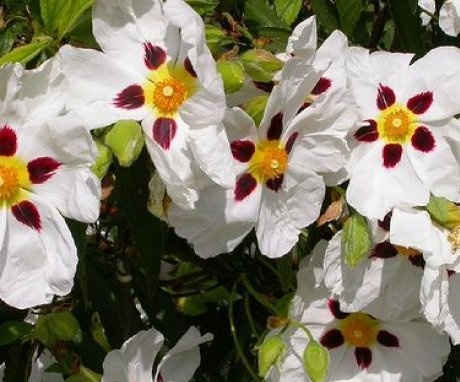

To be honest, this is the first time I hear about the cistus. I'll have to try to plant it at home. There is nothing complicated, and no special care is required. Nice color, I like it. We need to get busy.